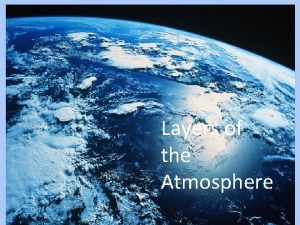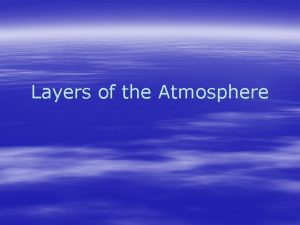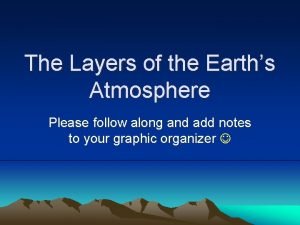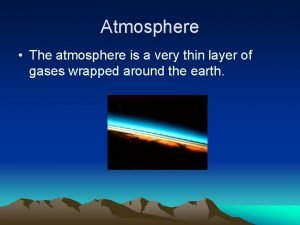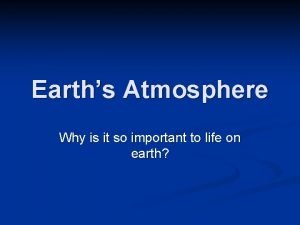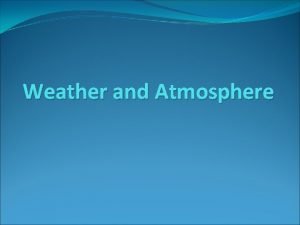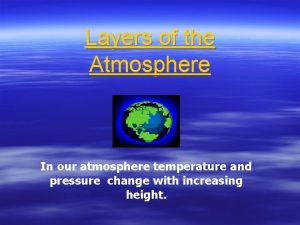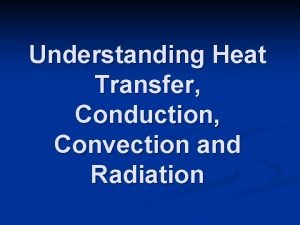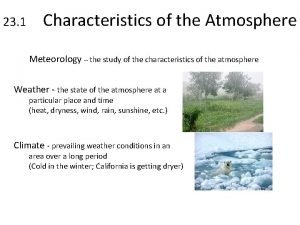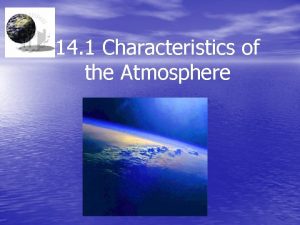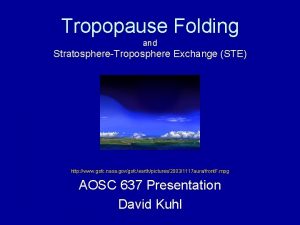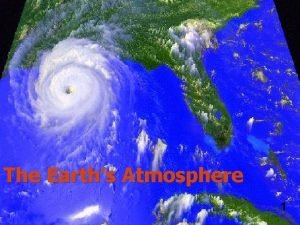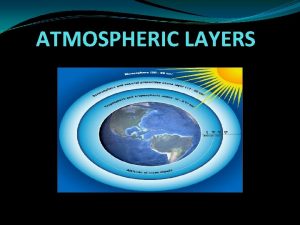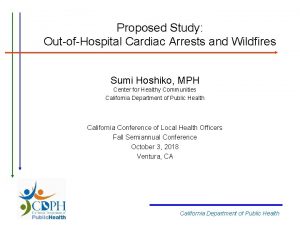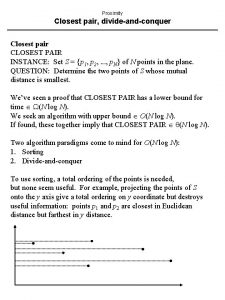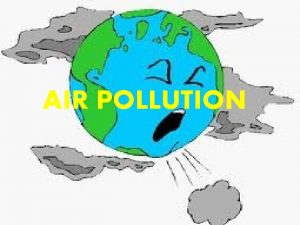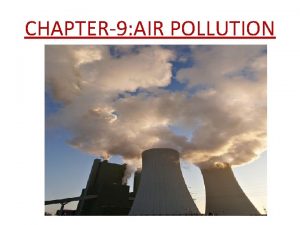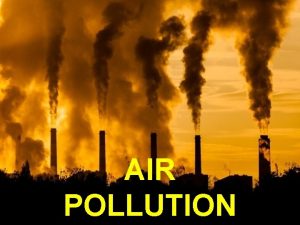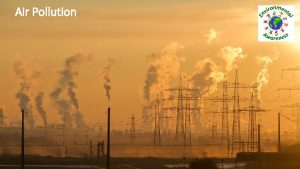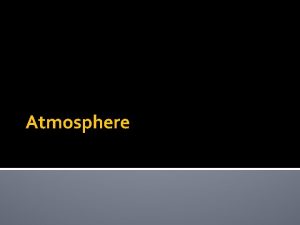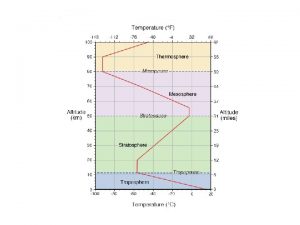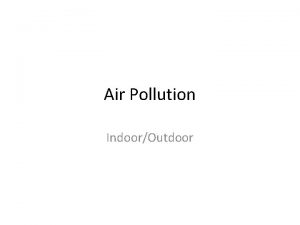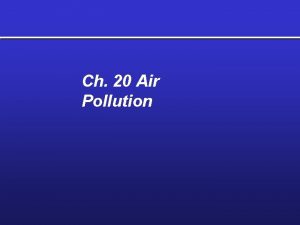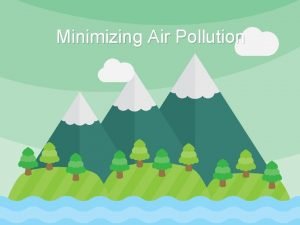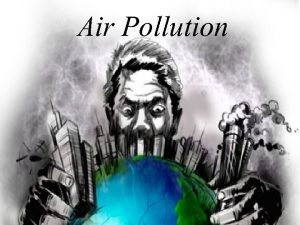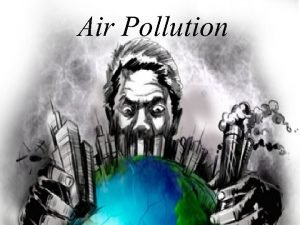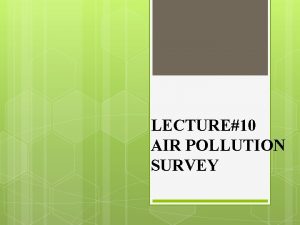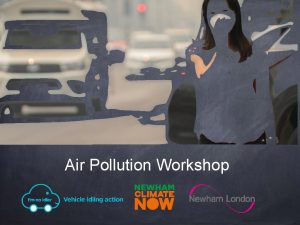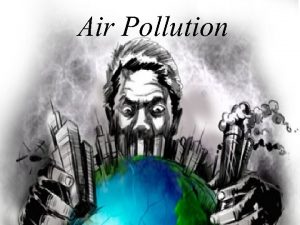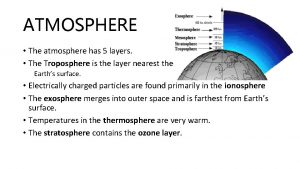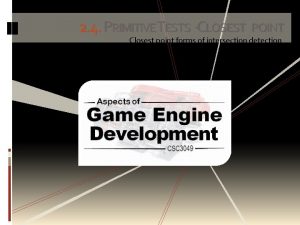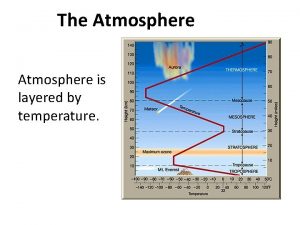Air Pollution Atmosphere Troposphere layer closest to the
































- Slides: 32

Air Pollution

Atmosphere Troposphere – layer closest to the earth surface Extends 11 miles above sea level over the equator and 5 miles over the poles Volume consists of 78% nitrogen and 21% oxygen Responsible for short term weather and long term climate

Stratosphere – second layer that extends 11 -30 miles above the earths surface Large concentration of ozone O 3 This layer of ozone acts as a sun screen blocking 95% of the sun’s harmful UV rays

Mesosphere – extends 30 -50 miles Thermosphere – extends 50 -80 miles

Air Pollution Def – the presence of chemicals in the atmosphere in concentrations high enough to harm organisms and materials and to alter climate Can come from natural and human sources

Outdoor Pollutants 1. Primary Pollutants – emitted directly into the atmosphere Soot and carbon monoxide 2. Secondary Pollutants – where primary pollutants react with one another and form new pollutants

Indoor Pollutants Can be pollutants from outside or chemicals used inside buildings According to the WHO 1 in 6 people breath unhealthy air


Smog Industrial Smog – consists mostly of sulfur dioxide and aerosols Gray in color and form acid rain Mostly found in developed countries Photochemical Smog – produced when chemicals react with sunlight Yellowish brown in color with a choking odor

Totally did not know that this existed!!!! !!

Smog Formation 3 natural factors reduce air pollution 1. Rain/Snow cleans the air 2. Salty sea spray washes out particulates from air that flows from land to sea 3. Wind sweep and dilute pollutants mixing them with clean air

3 factors that increase smog 1. Buildings slow wind speed, dilution, and removal of pollutants 2. Hills and mountains reduce the flow of air in valleys allowing pollutant levels to build up 3. High temperatures promote chemical reactions

Sources of pollution Combustion of fossil fuels such as oil, gas, and coal This burning produces pollutants such as nitrogen oxides, sulfur dioxide, carbon monoxide and lead particulates

Nitrogen Oxide (NO) Derived from combustion activities such as road emissions NO is not harmful but will oxidize into NO 2 which is harmful Some effects include irritated lungs and susceptibility to infection such as influenza Bird flu anyone? ? ? ?

Sulfur Dioxide (SO 2) Produced when materials or fuel are burned containing sulfur Much SO 2 is natural but also come from a power stations burning fuel Can cause lung failure and problems for asthmatics

Carbon Monoxide (CO) Colorless, odorless gas that results from incomplete burning of fuels Prevents the normal transport of blood which reduces the amount of oxygen to the heart


Lead/Heavy metals Introduced mostly from industrial factories Most harmful to infants and young children Has been linked to impaired mental functions, visual motor functions, decreased memory and attention span

Acid Rain the process by which acids with a p. H normally below 5. 6 are removed from the atmosphere in rain, snow, sleet or hail When Sulfur and Nitrogen combine with oxygen to for sulfur dioxide and nitrogen oxide Mix with vapor in the air to become acid rain

Effects on Environment Makes trees lose their leaves and needles (turn brown) Also will stunt growth, damage bark, and make vulnerable to weather, disease and insects Lakes become acidic. Fish die which in turn kills birds that eat toxic fish Fish eggs become damaged Fish become stunted, sick, or lose reproductivity




Effects on buildings When acid rain comes in contact with limestone or sandstone, they turn into dust (gypsum) Have an effect on buildings, stained glass, railroads, airplanes, cars, stone bridges, and pipes



Effect on humans Can cause death Mostly causes respiratory problems Toxins taken in by plants and animals are absorbed by humans when eaten Can cause brain damage, kidney problems, and Alzheimer's disease

Solutions conserve energy and pollute less! Use less electricity; and carpool, use public transportation, or walk when you can Clean the coal. Coal can be cleaned by running water over it. That pulls out the sulfur but this is very costly so companies don’t do it

Clean Air Act Passed in 1963, 1970, 1977, 1990 Requires EPA to regulate and protect the public to exposure airborne pollutants Primary standard – set to protect human health Secondary standard – intended to prevent environmental and property damage

Outdoor pollutants has decreased since 1970 because of two factors: 1. Citizens insisted laws be passed and enforced 2. The country was wealthy enough to make changes

More can be done!! There are deficiencies in the act such as: 1. We rely on pollution cleanup rather than on prevention 2. Congress has failed to increase fuel-efficiency standards for cars, SUVs and light trucks 3. Regulations from emissions from inefficient two cycle gas engines remains inadequate

4. The acts have done little to to reduce emissions of carbon dioxide and other greenhouse gases 5. Acts have failed to deal with indoor pollutants 6. Need for better enforcement of the acts
 Troposphere stratosphere mesosphere and thermosphere
Troposphere stratosphere mesosphere and thermosphere Section 1 what causes air pollution
Section 1 what causes air pollution Chapter 12 air section 1 what causes air pollution
Chapter 12 air section 1 what causes air pollution Which is the first layer of atmosphere
Which is the first layer of atmosphere Thermosphere pictures
Thermosphere pictures Very thin layer
Very thin layer Define atmosphere
Define atmosphere Atmosphere and its layers
Atmosphere and its layers Troposphere characteristics
Troposphere characteristics Outermost layer of the atmosphere
Outermost layer of the atmosphere Hottest layer of atmosphere
Hottest layer of atmosphere Air higroskopis air kapiler dan air gravitasi
Air higroskopis air kapiler dan air gravitasi Troposphere characteristics
Troposphere characteristics Troposphere characteristics
Troposphere characteristics Troposphere
Troposphere Solar energy and the atmosphere
Solar energy and the atmosphere Why is the mesosphere important
Why is the mesosphere important Presentation layer functions
Presentation layer functions Layer 2 e layer 3
Layer 2 e layer 3 Fig 19
Fig 19 Secure socket layer and transport layer security
Secure socket layer and transport layer security Layer-by-layer assembly
Layer-by-layer assembly Brush border enzymes
Brush border enzymes Secure socket layer and transport layer security
Secure socket layer and transport layer security Layer 2 vs layer 3 bitstream
Layer 2 vs layer 3 bitstream Secure socket layer and transport layer security
Secure socket layer and transport layer security Secure socket layer and transport layer security
Secure socket layer and transport layer security Introduction about air pollution
Introduction about air pollution Air pollution specialist
Air pollution specialist Soil pollution effects on human health
Soil pollution effects on human health Air pollution
Air pollution Air pollution wildfires
Air pollution wildfires Indoor air pollution examples
Indoor air pollution examples
